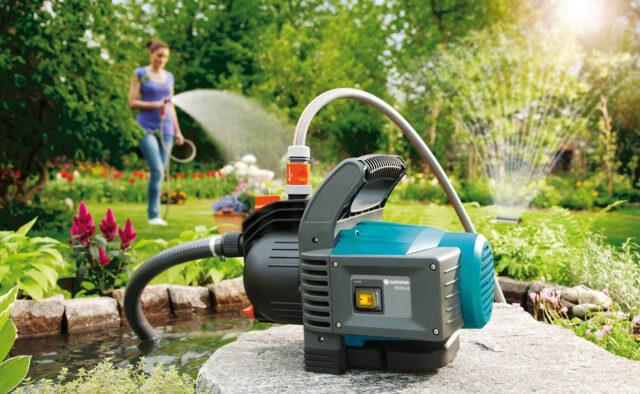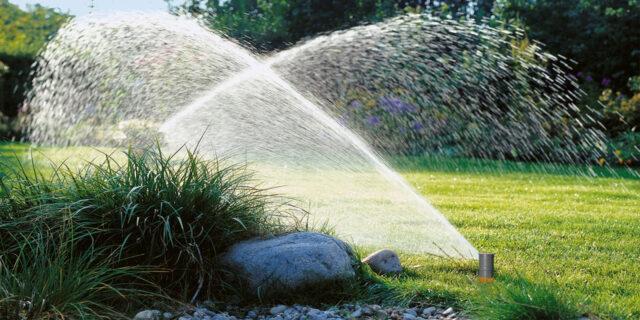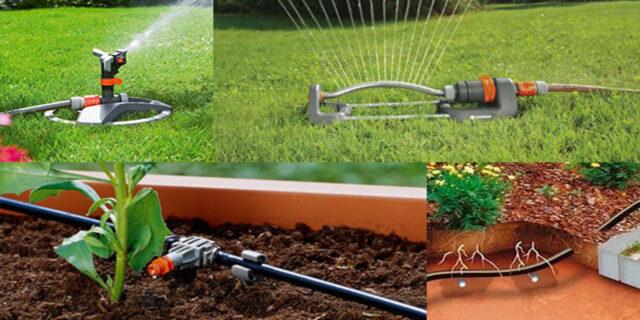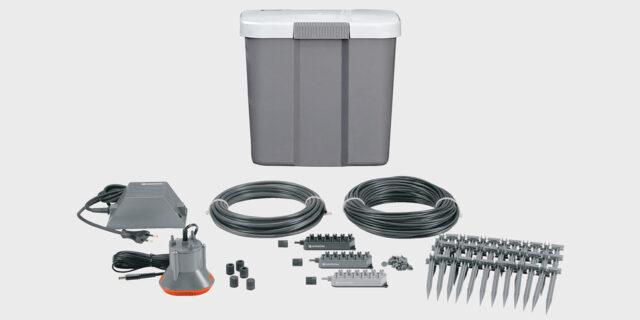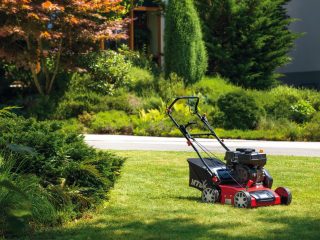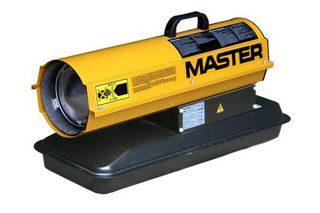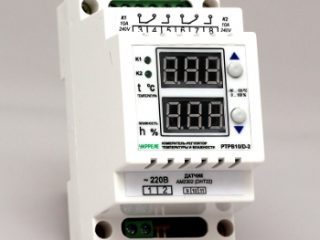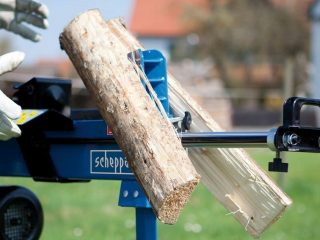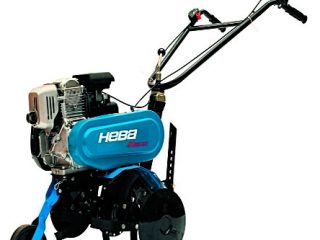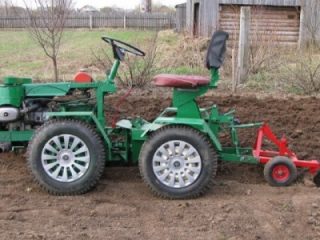Content
Owners of private houses or owners of garden and park areas want to see velvety lawns, flowering flower beds and lush tree crowns. These desires can only be realized by providing the plants with care. First of all, providing for proper watering.
Gardena helps millions of customers around the world cope with this task.
How do irrigation systems work?
Sufficient and uniform watering is the basis for good plant growth. Each of them needs a certain amount of water and a special approach. All this can be provided Gardena irrigation systems.
The company offers a wide range of solutions for irrigation of territories. The main advantage of the systems of the German manufacturer is that all their elements fit each other perfectly, have sealed connections, are easy to use and functional.
Original Gardena irrigation system — This is a universal option for automatic watering. The company's product range includes options for different needs:
- lawn irrigation;
- spot watering of flower beds;
- caring for flowers in pots on the terrace or balcony.
An excellent solution would be automatic sprinkler for irrigation Gardena, working according to schedule.
Most automatic complexes consist of the following elements:
- Source of water supply. This could be a storage tank, a well, an open reservoir.
- Pump.
- Devices for water filtration.
- Pipeline for delivering flow to the required points.
- Sprinklers or sprinklers.
- Hoses for drip irrigation.
- Water outlets.
Additionally, weather sensors and sensors for measuring soil moisture can be installed.
For stable operation Gardena system, like similar ones, a stable water pressure is required.
Advantages and disadvantages
Having once installed and correctly configured the irrigation complex, the client will forget about routine work and stop worrying about timely nutrition of the plants on the site, even during a dry period.
The main advantages of automatic watering:
- the ability to set the time and frequency of irrigation;
- does not cause crust formation on the soil surface (if properly configured);
- reducing water use;
- sufficient watering of hard-to-reach areas;
- improving the quality of soil moisture;
- adjusting the watering intensity for any type of plant.
Efficient use of water will reduce its consumption by half, while the quality of irrigation, on the contrary, will increase by almost half.
To the main disadvantage watering Gardena consumers who have personally experienced the performance of the systems attribute the monetary costs of their installation. If installation is carried out by professionals, this significantly increases the amount of investment.
Some gardeners decide to install them themselves Gardena watering kits. But professionals recommend using the services of specialists.
Incorrect design or installation errors can lead to problems:
- creation of dry, non-spillable zones;
- low pressure in the system;
- disturbances in the operation of sprinklers;
- malfunctions in the operation of the automation and, as a result, overheating of the pump.
All this can be avoided by entrusting the work of installing a rainwater or drip irrigation Gardena professionals or by carefully understanding the intricacies.
Element overview
High-quality drip irrigation is ensured by a well-assembled design consisting of functional and well-combined main and auxiliary elements.
In the basic version, the irrigation and drip irrigation system includes:
- Pump (motor pump or electric) or pumping station. When choosing, you should pay attention to performance, initial pressure, efficiency in fuel or electricity consumption.
- Filter station — This is a key part of the system on which its durability and performance depend. Purifies water from impurities using coarse or fine filters.
- Main pipeline. Made from material that does not corrode. It is important to take into account the diameter and safety factor of the pipes so that their throughput corresponds to the required volume of water.
- Sprinklers - sprayers intended for watering specific area. Depending on the shape of their nozzles, the range and method of watering (spraying, splashing) change.
- Water outlets. Installed flush with the ground. Used with sprinklers or hoses for drip irrigation.
Sensors for monitoring weather conditions help rationally use water, ensuring plants receive high-quality deep watering.
A rain sensor, for example, forcibly turns off irrigation. It can be easily programmed to stop the system after the first drops of rain or at a certain intensity.
Manufacturers of irrigation systems recommend using an additional soil moisture sensor.It signals the completion of irrigation: when the amount of water in the soil has reached the required level, its supply automatically stops.
Installation
Assemble the system watering the lawn "Gardena" possible without additional tools. It is very easy to assemble thanks to the Quick & Easy function.
Step-by-step installation guide with general rules and recommendations:
- The parts of the irrigation system are laid out on the lawn according to the plan. Having measured the required length for each main hose, cut it off. The necessary fittings are attached to the pipe, secured spray gun for watering Gardena. This must be done carefully, avoiding soil getting onto the ends of the pipeline.
- Next step — installation of sprinklers. They set the range and direction of watering. To make sure the connection is correct, carry out a test run. As long as parts of the complex are not hidden underground, problems are easy to fix.
- Attach the pipeline to the connector through the seal. This is necessary to completely seal the structure.
- It is optimal to make the trench for the highway V-shaped, 20 cm deep. Be sure to remove stones and turf from it.
- Drain valves are installed at low points. So-called drainage cushions are formed under them. — a layer of clean coarse gravel.
- When laying pipes in trenches, special attention is paid to the height of the sprinklers. They should be placed below ground level, taking into account soil shrinkage.
- After filling the trenches, the turf is firmly laid back.
Procedure for installing a drip irrigation system:
- First stage — connecting the master unit to a water source using a connector or hose.
- Second phase — laying main hoses, checking functionality, securing hoses to the ground with guides.
- Third stage — Droppers or micro-nozzles are installed in the right places in the hose.
Finally, the supply hose is connected and the functionality of the system is checked.
However, collect — only half the battle. The main thing is to correctly configure the complex after installation so that dripper for drip irrigation Gardena worked in in accordance with the specified parameters.
Maintenance of the irrigation system
If the previous steps are carried out taking into account the rules and recommendations of the manufacturer, then maintaining the irrigation block in order in the summer will not be difficult. It is enough to monitor the filters, blow them out and clean them in a timely manner.
To preserve the system in winter, you need to disconnect it from the water source with the onset of the first frost. Disconnect electrical equipment used for watering and store it in a warm and dry place. The remaining components can safely wait in the ground for spring.
Gardena irrigation system is a universal engineering and technical complex that will provide high-quality watering of plants in a personal plot in an automatic mode. Purchasing products from this manufacturer is always a choice in favor of quality, reliability, availability and ease of use.
